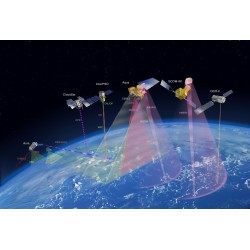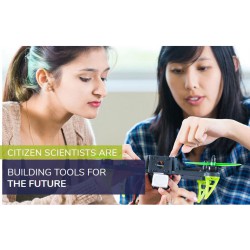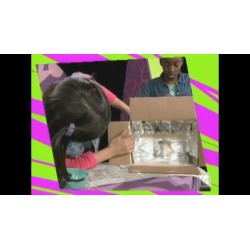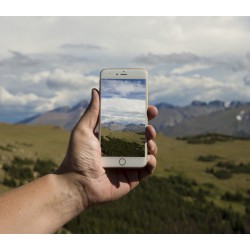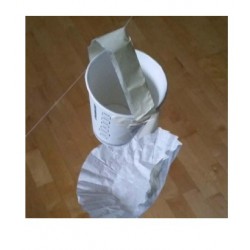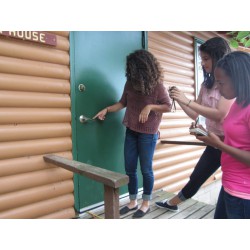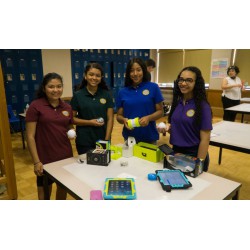Sort
Engineering There are 150 items.
-
Build a Satellite
Patrons learn about the use and structure of satellites and use the engineering design process to design, build, test, and improve a model satellite 0
Check It Out
How-to Video -
Tangram Rocket
Participants play a game together to create a large rocket made from geometric shapes, or tangrams 0
Check It Out
-
Hovering on a Cushion of Air
Patrons construct CD hovercrafts and investigate Newton's laws of motion, and learn about how hovercraft technology is used in training astronauts for space missions 0
Check It Out
-
Citizen Science: SciStarter Projects
Citizen science enables people from all walks of life to advance scientific research! Find projects that match your community's interest, collect data from your local area, and engage in citizen science using SciStarter resources! 0
Check It Out
-
Testing Insulators: Ice Cube in a Box
In this activity, patrons work together to see how they can effectively slow the melting of an ice cube. They construct containers for their ice cubes using materials like cardboard, newspaper, aluminum foil, and tape. These containers create an insulating environment designed to keep heat away from the ice cube. 0
Check It Out
How-to Video -
GLOBE Observer: Land Cover
This citizen science toolkit provides resources and activities for collecting data and learning about how different types of land cover could increase a community's risk of natural disasters, such as flooding. 0
Check It Out
-
Light Bulb Challenge
Patrons learn about energy efficiency by comparing incandescent light bulbs to compact fluorescent light bulbs 0
Check It Out
-
Take & Make: Balloon Rockets
Children are "rocket scientists" as they create and launch simple balloon-powered straw "rockets." Turn this into a "Take & Make" activity by providing bags with materials (balloons, drinking straw, and string) along with the printed family guide. 0
Check It Out
How-to Video -
Build a Zipline
Patrons use common materials to design and construct their own zipline to transport small item from here to there. Turn this into a "Make & Take" activity by providing printed family guides and materials for constructing ziplines in a bag for your patrons. 0
Check It Out
How-to Video Family Take-home Activity A take-home that can be sent with patrons that wish to do STEM activities at home. These at-home activities cover similar topic areas as the associated activity and could be handed out at the conclusion of a program or left on a circulation desk for patrons to take home. -
¡Fuera!
¡BRAYNK! ¡BRAYNK! ¡BRAYNK! La mayoría de los sistemas de alarma son solo un sensor o dos conectados a una sirena o un timbre. Las alarmas simples consisten de un sensor que también funciona como interruptor. Cuando se activa, el sensor completa un circuito eléctrico y la electricidad fluye a la sirena, ¡lo que hace sonar laalarma! 0
Check It Out
-
Luces de Casillero
Los circuitos están a tu alrededor. Están en juguetes para niños, en lámparas, en linternas. Muchos de estos circuitos incluyen un interruptor que nos permite controlar cuando la electricidad fluye a través de él. ¡Con algunos materiales simples, puede hacer un interruptor y un circuito para usar en cualquier lugar! 0
Check It Out
-
Globos Rebotantes
Deportes + Ingeniería = ¡Gran Diversión! La ingeniería en deportes se centra en el diseño, desarrollo y prueba de implementos deportivos, tales como las pelotas. 0
Check It Out



